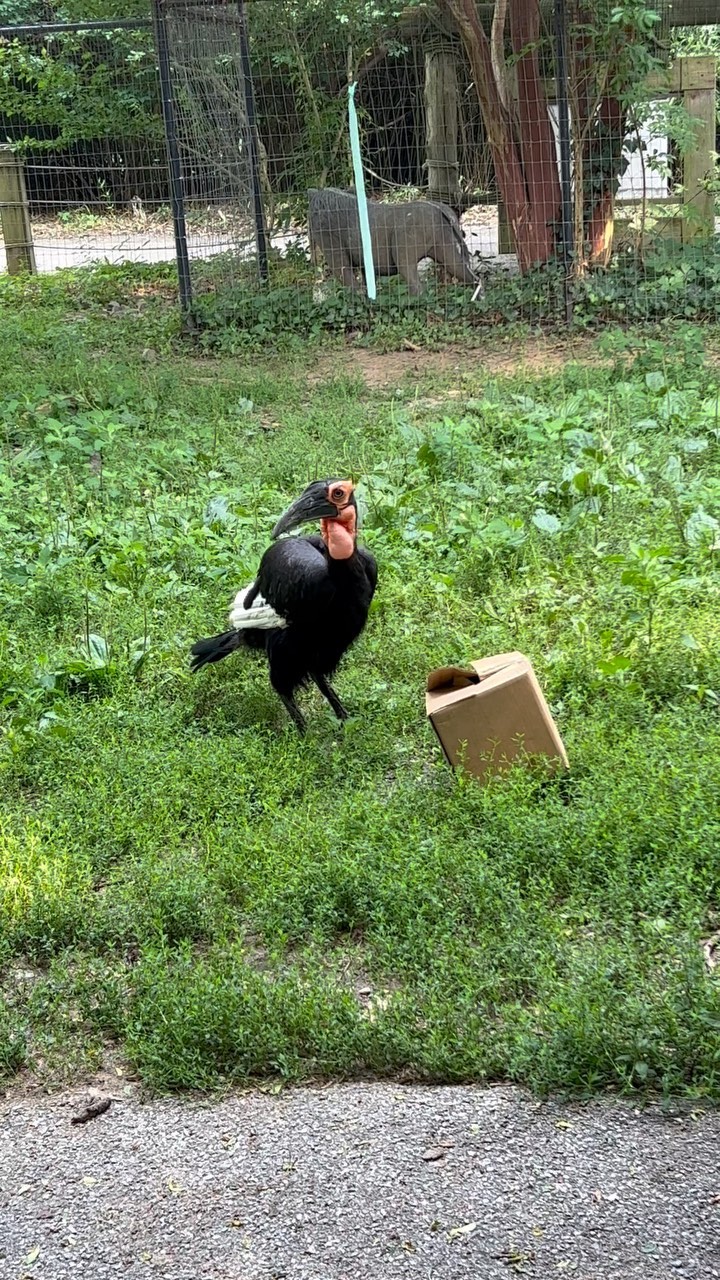Summary:
– We are thrilled to announce that all our animals are back on exhibit at the zoo.
– The improving air quality has allowed us to grant the animals access to their outdoor habitats.
– We prioritize providing a diet and environment that encourages natural behaviors in our animals.
– Our Southern ground hornbills, with their impressive beaks, are expert hunters in the wild.
– Join us in celebrating the return of our amazing animals through a visit to the zoo.
We are overjoyed to share the exciting news that all our beloved animals are back on exhibit at the zoo! After a period of restricted access due to poor air quality, we are delighted to finally allow them to explore their outdoor habitats again. It celebrates nature’s resilience and our team’s dedication to ensuring these incredible creatures’ well-being.
One species that has especially captured our attention is the Southern ground hornbill. These magnificent birds, with their striking black plumage and bright red facial skin, are native to the savannas and woodlands of Africa. Their presence in our collection reminds us of our planet’s rich diversity of wildlife.
If you happen to visit the zoo, make sure to head over to the Southern ground hornbill exhibit. Here, you will witness these birds’ captivating and unique behaviors firsthand. Their strong, long beaks are perfectly adapted for their feeding habits. They are true hunters, preying upon rodents, amphibians, reptiles, and invertebrates in the wild. At the zoo, we replicate this natural diet, ensuring that these incredible hunters can continue to utilize their skills.
To encourage their natural behaviors, we provide them opportunities for foraging and exploration. One prime example is the box with bugs that you can see in the exhibit. The hornbills use their powerful beaks to investigate the box, searching for their next meal. It’s common to see them tossing and turning the box, demonstrating their resourcefulness and intelligence as they extract their food.
But why is it so important to recreate these natural behaviors in captivity? Well, the answer lies in the well-being of the animals themselves. We promote their physical and mental health by providing them with stimulating environments that mimic their natural habitats. It’s not just about offering food and shelter; it’s about allowing them to engage in activities essential to their species’ survival.
Of course, we also recognize our responsibility to educate our visitors about these incredible creatures. The Southern ground hornbill is a lesser-known species, and by showcasing them in our zoo, we hope to raise awareness and appreciation for their conservation. These birds face numerous challenges in the wild, including habitat loss and poaching. Through the amazing platform of zoos, we can inspire individuals to take action and support conservation efforts.
So, if you’ve been eagerly waiting to visit our zoo and witness the wonder of these animals, now is the perfect time. Spread the exciting news, gather your loved ones, and embark on an unforgettable adventure of discovery and awe. The return of our animals to their exhibits is a reason for everyone to come together and celebrate the beauty of nature.
In conclusion, we are thrilled to announce that all our animals are back on exhibit at the zoo. We can finally grant them access to their beloved outdoor habitats thanks to improving air quality. Our Southern ground hornbills, with their impressive beaks and hunting abilities, are just one example of the incredible wildlife that awaits you at the zoo. Join us in celebrating their return, and let their captivating presence inspire you to appreciate and protect the wonders of the natural world.
*****
Source Description
We are happy to report that all our animals are back on exhibit today!
Due to the improving air quality, the animals, like our Southern ground hornbills, have been given access to their outdoor habitats. We will continue to monitor the AQI to ensure they are experiencing healthy conditions.
Here, you can see our hornbills using their long beaks to investigate a box with bugs inside. In the wild, they typically prey upon rodents, amphibians, reptiles and invertebrates – basically any food item they can overcome with their downward-curved beaks. Here at the zoo, we offer them their diet in ways that encourage these natural behaviors to be used.


